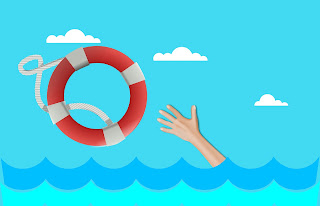What is “The Instinctive Drowning Response?” The term coined by Francesco A. Pia, Ph.D is what people do to avoid drowning or perceive suffocation in the water. It is almost silent: Very little splashing , No waving, No yelling or calls for help.
1. “Except in rare circumstances, drowning people are physiologically unable to call out for help. The respiratory system was designed for breathing. Speech is the secondary or overlaid function. Breathing must be fulfilled before speech occurs.
2. Drowning people’s mouths alternately sink below and reappear above the surface of the water. The mouths of drowning people are not above the surface of the water long enough for them to exhale, inhale, and call out for help. When the drowning people’s mouths are above the surface, they exhale and inhale quickly as their mouths start to sink below the surface of the water.
3. Drowning people cannot wave for help. Nature instinctively forces them to extend their arms laterally and press down on the water’s surface. Pressing down on the surface of the water permits drowning people to leverage their bodies so they can lift their mouths out of the water to breathe.
4. Throughout the Instinctive Drowning Response, drowning people cannot voluntarily control their arm movements. Physiologically, drowning people who are struggling on the surface of the water cannot stop drowning and perform voluntary movements such as waving for help, moving toward a rescuer, or reaching out for a piece of rescue equipment.
Not always when a person is yelling for help and thrashing are they in real trouble….they could be experiencing aquatic distress. Aquatic distress is not always present before the Instinctive Drowning Response and aquatic distress doesn’t last long – BUT – unlike true drowning, these victims can still assist in their own rescue. They can grab lifelines, throw rings, etc. Knowing about water Safety and Pool Safety can and will save lives.
For more information about Water Safety, Pool Safety and Pool Fences contact:
Arizona Childproofers at 480-634-7366
Sources:









No comments:
Post a Comment